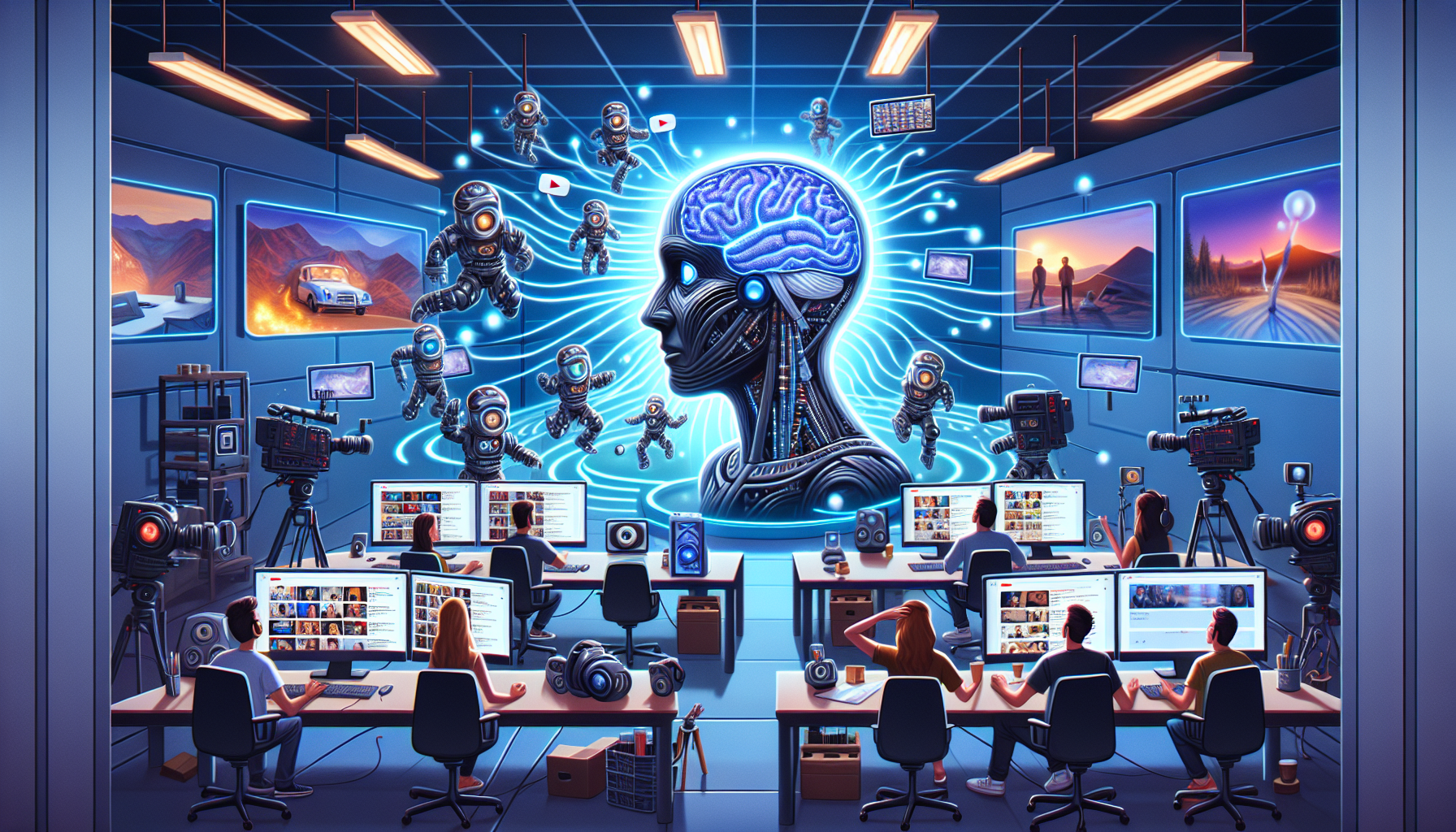 ## YouTube Creators Discover Apple and Other Companies Used Their Videos to Train AI Models
## YouTube Creators Discover Apple and Other Companies Used Their Videos to Train AI Models
The Revelation of Unauthorized Data Use
Recently, it was revealed that large tech corporations including Apple, Salesforce, and Anthropic, used tens of thousands of YouTube videos to train their AI models without the creators’ consent, potentially violating YouTube’s terms of service. This discovery was reported by Proof News and Wired.
The Significance of “The Pile” Dataset
What is “The Pile”?
“The Pile” is a dataset compiled by the nonprofit EleutherAI. It was initially designed to offer an accessible resource for smaller companies or individuals without the vast resources of larger tech firms. However, big corporations have also used this dataset. “The Pile” features diverse content such as books, Wikipedia articles, and YouTube captions.
Inclusion of YouTube Videos
The dataset incorporates captions from 173,536 YouTube videos from over 48,000 channels. Well-known YouTubers such as MrBeast, PewDiePie, and tech reviewer Marques Brownlee had their content included. The captions were obtained through YouTube’s captions API, simulating a web browser’s data download process.
Responses from Content Creators
Creator Reactions
Many content creators were shocked to learn their work had been used without their permission. David Pakman of The David Pakman Show voiced his frustration, noting that his livelihood relies on the content he produces. Julia Walsh, CEO of Complexly, which produces educational shows like SciShow, also expressed her displeasure over the unauthorized use of their meticulously produced videos.
Legal and Ethical Issues
The scraping of YouTube content brings up important legal and ethical considerations. YouTube’s terms of service strictly forbid automated means of accessing videos. Although EleutherAI founder Sid Black argued that using a script to download captions is similar to how a browser operates, this does not mitigate the concerns of content creators whose intellectual property rights seem to be infringed.
Corporate Reactions and Explanations
Responses from Apple and Other Companies
Companies like Apple have deflected direct responsibility by claiming they sourced the data from third parties, thus technically sidestepping direct fault. Anthropic spokesperson Jennifer Martinez contended that the dataset comprises a minor subset of YouTube subtitles and does not expressly breach YouTube’s terms.
Google’s Position
Google stated that it has implemented measures over the years to prevent unauthorized scraping but did not disclose specific details relating to this case, leaving room for further scrutiny.
Broader Impacts on AI Training
AI Models and AI-Generated Content
With the increasing prevalence of AI-generated content, building datasets free from AI-produced material is becoming more challenging. This cyclical training might result in models that are more redundant and less innovative.
Legal Disputes and Fair Use Doctrine
The use of scraped data for AI training has led to several legal disputes. Companies such as OpenAI argue this practice falls under “fair use,” but these issues remain unresolved in court, presenting an uncertain legal landscape.
Conclusion
The unauthorized use of YouTube videos by major tech firms for AI training underscores significant ethical and legal issues concerning data use. While companies like Apple and Anthropic may not have scraped the data themselves, their reliance on third-party datasets like “The Pile” prompts questions about accountability and intellectual property rights. As the field of AI progresses, the complexities of data collection and utilization will continue to evolve.
Q&A Session
Q1: What is “The Pile”?
A1: “The Pile” is a dataset by EleutherAI, containing a variety of content including books, Wikipedia articles, and YouTube captions. It was designed to help smaller entities but has also been used by bigger tech firms.
Q2: How were YouTube videos included in “The Pile”?
A2: Captions from 173,536 YouTube videos spanning over 48,000 channels were collected through YouTube’s captions API, emulating web browser data downloads.
Q3: Did Apple scrape YouTube data directly?
A3: No, Apple procured the data from third parties that scraped the content, allowing Apple to avoid direct accountability.
Q4: What are the legal consequences of this data usage?
A4: Scraping YouTube content without permission could violate YouTube’s terms of service and has resulted in several lawsuits. Companies claim such practices are “fair use,” but court outcomes are still pending.
Q5: How did content creators react?
A5: Many creators were surprised and frustrated to find their work used without consent, raising concerns about intellectual property rights and ethical practices.
Q6: What actions has Google taken?
A6: Google asserts it has taken steps to prevent unauthorized scraping but has not provided specific information about this particular incident.
Q7: What are the broader implications for AI training?
A7: As AI-generated content becomes more widespread, it’s challenging to create datasets devoid of AI-generated material, which may lead to less original and more repetitive models.